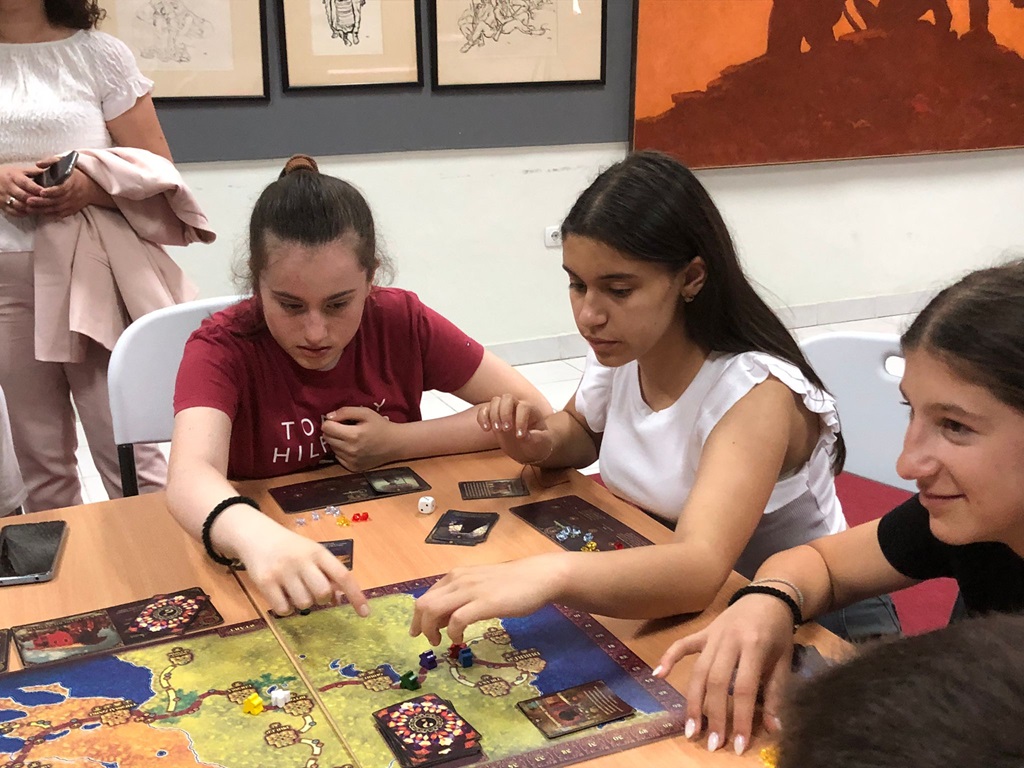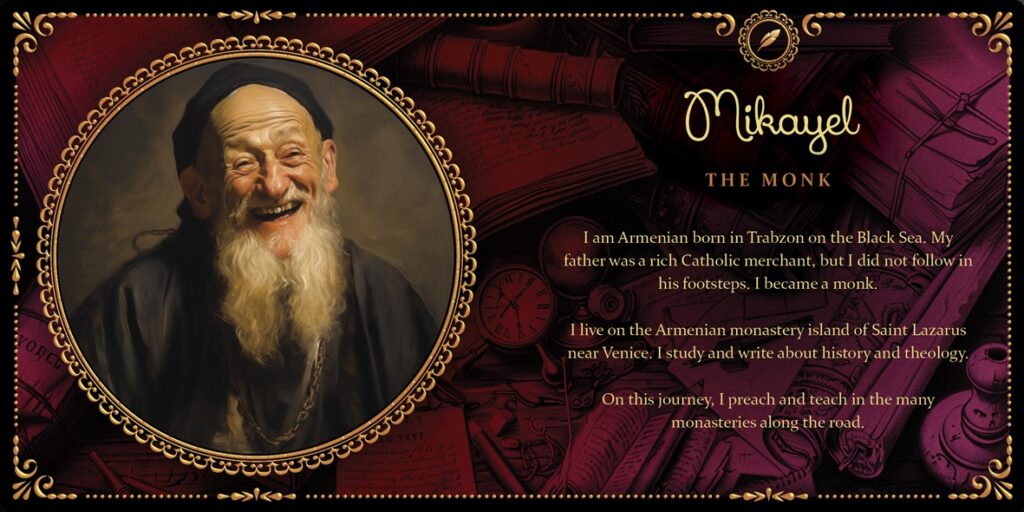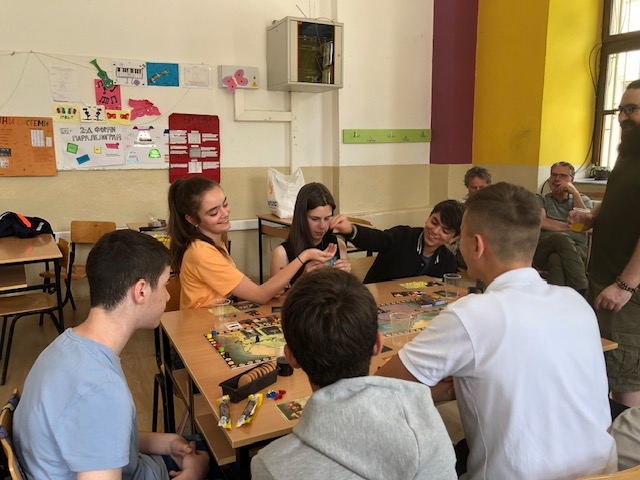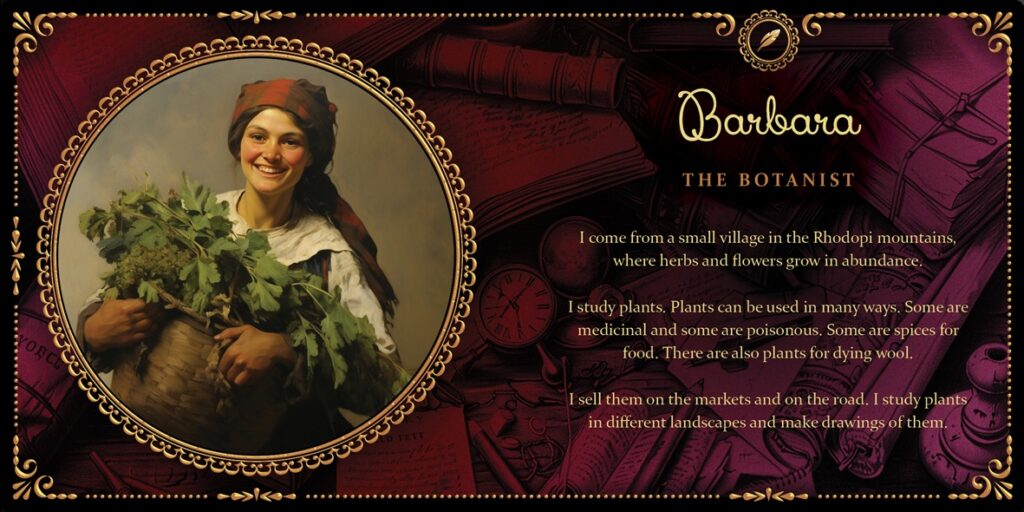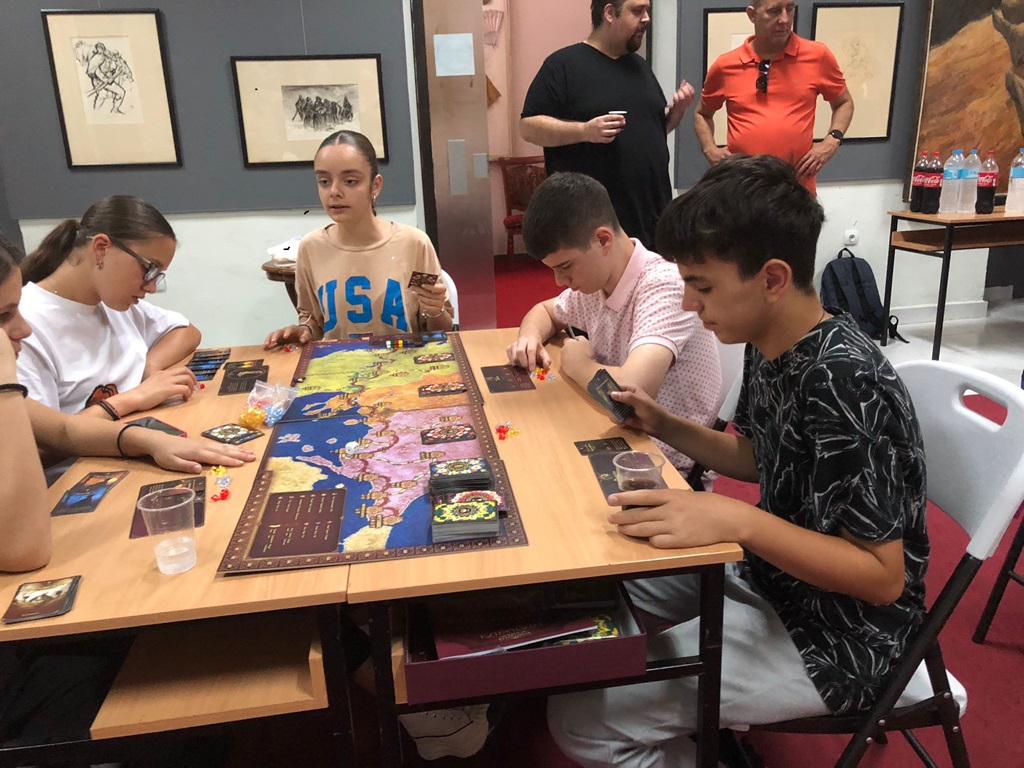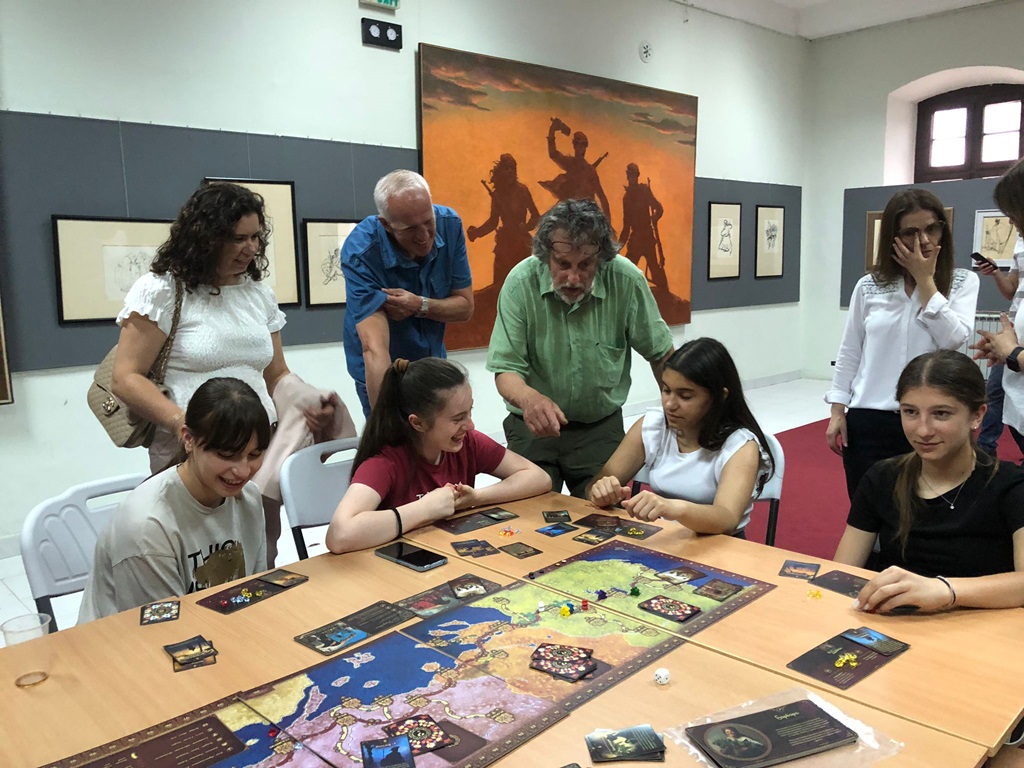Caravan Via Egnatia
The Board Game
A taste of traveling the Balkans in the late 18th century.
Travelling in the old days?
The Via Egnatia connects East and West in the Southern Balkans. More than 2000 years people of all sorts travelled this road: merchants priests, shepherds, fishermen, musicians, farmers and diplomats. As a character from 1800 AD you travel in the Caravan Via Egnatia board game.
Adventures await you: earthquakes, robbers, broken bridges and treasure hunters, religious festivals and fake preachers, stray dogs and lost children, language problems to solve by pantomime and issues to discuss. Do you travel alone or together? Will you help someone distress?

Big news! The Caravan Via Egnatia board game won the European Innovative Teaching Award 2025. Thanks to our partners, students, teachers and the EU. May it inspire more schools along the Via Egnatia and beyond to connect
In fact it is much like traveling on foot nowadays…
For the players
Wondering – Walking – Winning
12+ Years
This beautiful board game can be played in schools and clubs by children aged 12 years and up.
3-12 Players
Usually played with 3-6 players, but increased to max 12 when playing in pairs. The game can be facilitated by teachers
Classroom Friendly
The 1st edition in 2024 is released in three languages: English, Macedonian and Albanian.
Civic education
The 1st edition is distributed to schools in North- Macedonia, Albania and the Netherlands.
Our great partner: the Macedonian Civic Education Center. Game design: Ivan Mickovski. Graphic design: Nemanja Trajkovic



Dutch schools donate games to schools along the Via Egnatia, they get free games and can play, do education and fun projects through e-twinning
Production for Greece and Turkey is pending. The game will be for sale for a wider audience with a pre-registration at some point in the future
Teacher-Facilitator
Whether you use the game in history, geography or citizenship education, the Facilitator Manual will help you to get the most out of the gaming.
Discuss the potential learning outcome with your colleagues and benefit from all the potential the game offers your students!
Gaming to learn
* This game is designed to integrate in civic education, history, geography and cultural classes.
* By identifying with travel-characters from different backgrounds, each with their own talents, children learn to respect diversity and different viewpoints.
* Collaboration is an important goal, next to individual ambitions.
* The game fosters curiosity for different historical periods and cultures.
* The game provides for insight in geography of the region.
* Our common history and relations are used as a way to connect.

